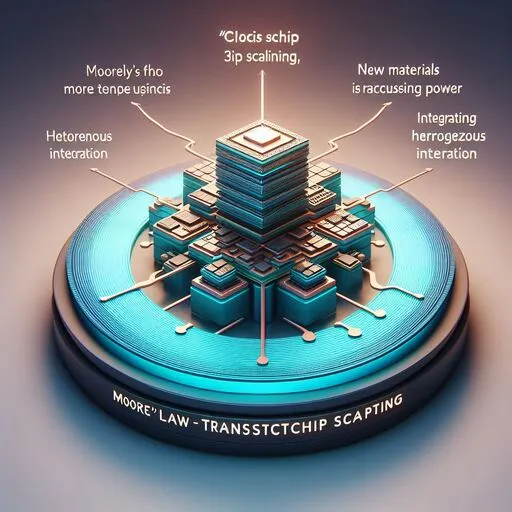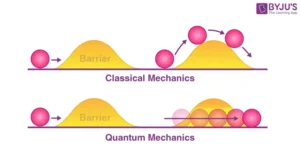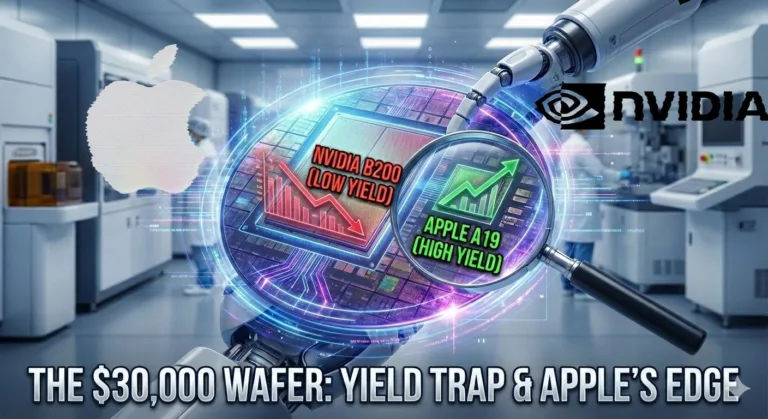There is a growing debate in the market , Is Moore’s Law Dead? This article explores the challenges facing chip manufacturers as they approach the potential limitations of Moore’s Law.
For decades, Moore’s Law has been a guiding principle in the tech industry. Coined by Gordon Moore, Co-founder of Intel, it observed that the number of transistors on a microchip roughly doubles every two years, This roughly doubling of transistors on a microchip in every 2 years was leading to exponential growth in processing power. This miniaturization or rather say Moore’s Law has driven incredible advancements in everything from personal computers to smartphones, and thus Moore’s Law become synonymous with technological progress.
However, there’s a growing debate: is Moore’s Law dead? This article explores the challenges facing chip manufacturers as they approach the potential limitations of Moore’s Law.
Also Read: 50% of chip manufactured by Russia is faulty
Shrinking Transistors: The Core of Moore’s Law
Moore’s Law’s prediction hinged on the ability to continuously shrink transistors, If you are a new in this industry and do not know about Transistors then let me tell you ,Transistors are basically the building block of semiconductors. Just like a water gauge controls the flow of water , In the similar manner transistors control the flow of current In the device. Imagine a city shrinking its houses to accommodate more people. That’s the essence of transistor miniaturization – cramming more power into a smaller space. Smaller transistors meant more could fit on a chip, leading to faster processing speeds and more powerful devices. This miniaturization also allowed for smaller and more portable electronics.
However, this miniaturization relies on a concept called transistor scaling. As transistors shrink, their physical properties change, impacting factors like power consumption and heat dissipation.
Challenges of Transistor Miniaturization
As we are pushing the limits of transistor scaling, several challenges are emerging. Just to list a few of them are increasing costs due to requirement of high precision machines, quantum tunnelling and increased heat generation. Let us discuss about them one by one.
- Shrinking Costs, Growing Difficulties: As we are trying to shrink the size of transistors, it is becoming more and more expensive to manufacture them. To go for smaller transistors, we need advanced manufacturing techniques. Techniques like extreme ultraviolet lithography are needed for such precise etching. Just to understand how much precision this manufacturing is demanding; you can Imagine trying to build a miniature model city with tweezers – that’s the level of precision required!
- Quantum Tunneling: At the atomic level, electrons can behave strangely. They can literally “tunnel” through incredibly thin barriers, causing leakage current and malfunctioning transistors. This is like tiny ghosts escaping through the walls of your miniaturized city!
 Image source: Byjus
Image source: Byjus - The Power Wall: Reducing transistor size can lead to increased heat generation. This “power wall” limits performance gains as managing heat becomes a major challenge. It’s like trying to cram more people into your miniature city, but they all generate their own heat!
These factors make it increasingly difficult to maintain the historical pace of Moore’s Law.
Beyond Transistor Miniaturization: Innovation Continues
While Moore’s Law in its original form may not hold true forever, the spirit of innovation in the semiconductor industry is alive and well. Here are some alternative approaches chip manufacturers are exploring:
- 3D Chip Stacking: Imagine stacking multiple layers of chips vertically, like pancakes. This allows for more processing power or integration of specialized chips in a smaller footprint. Think of it as building your miniature city upwards, creating high-rise buildings to save space!
- New Materials: Research is underway on using alternative materials like Gallium Nitride (GaN) for transistors. GaN offers potential advantages in terms of power efficiency and heat dissipation compared to traditional silicon. It’s like finding a new, stronger building material for your miniature city, one that can handle more activity without overheating!
- Heterogeneous Integration: This approach combines different types of chips, like processors and memory, into a single package. This allows for specialized functionality and optimized performance. Imagine having designated districts in your miniature city – a central business district for processors and a residential area for memory!
“Moore’s Law is dead, but innovation continues,” said Jensen Huang, CEO of Nvidia. These new approaches show that the industry is looking beyond simple transistor scaling to maintain progress.
Also Read: The old days video Of Nvidia CEO is getting viral
Impact of Moore’s Law Slowdown on Consumers and Industry
A slowdown in Moore’s Law could have implications for both consumers and the tech industry:
- Consumers: The rapid pace of performance improvement in devices we’ve come to expect might slow down. However, innovation in areas like software optimization and power efficiency can still lead to significant advancements. The good news is that even if our miniature cities don’t grow as quickly, they can still become more efficient and functional.
- Industry: Chip designers will need to adopt new design philosophies to maintain progress. This may involve focusing on more specialized chips for specific tasks or optimizing chip performance for power efficiency. Just like real cities, chip designers will need to adapt their approach to create smaller, more specialized devices.
Despite a potential slowdown in Moore’s Law, progress will continue, albeit through different avenues.
Join our WhatsApp channel.
Is Moore’s Law Dead: Conclusion
The challenges of miniaturization pose a significant hurdle for the future of chip development. However, the semiconductor industry is actively exploring new approaches like 3D stacking, new materials, and heterogeneous integration. While Moore’s Law in its original form might be dead , but other innovations will still keep it relevant.
Discover more from WireUnwired Research
Subscribe to get the latest posts sent to your email.


 Image source:
Image source: 
